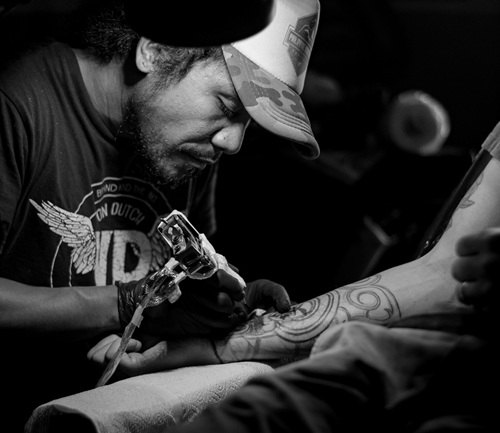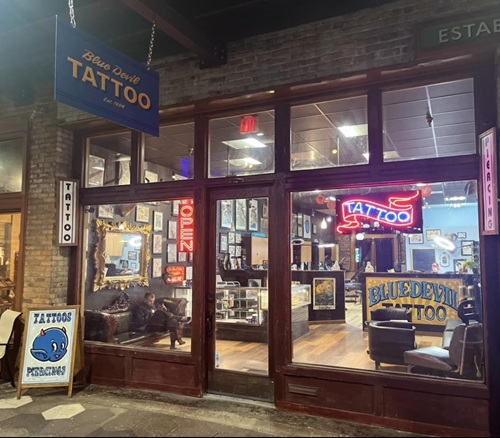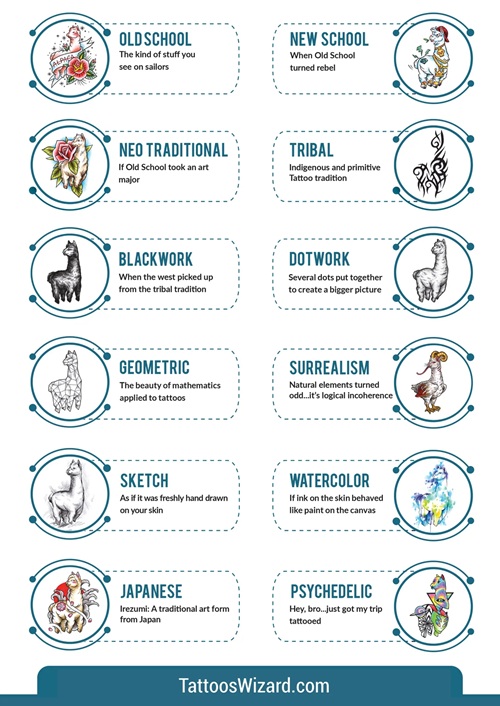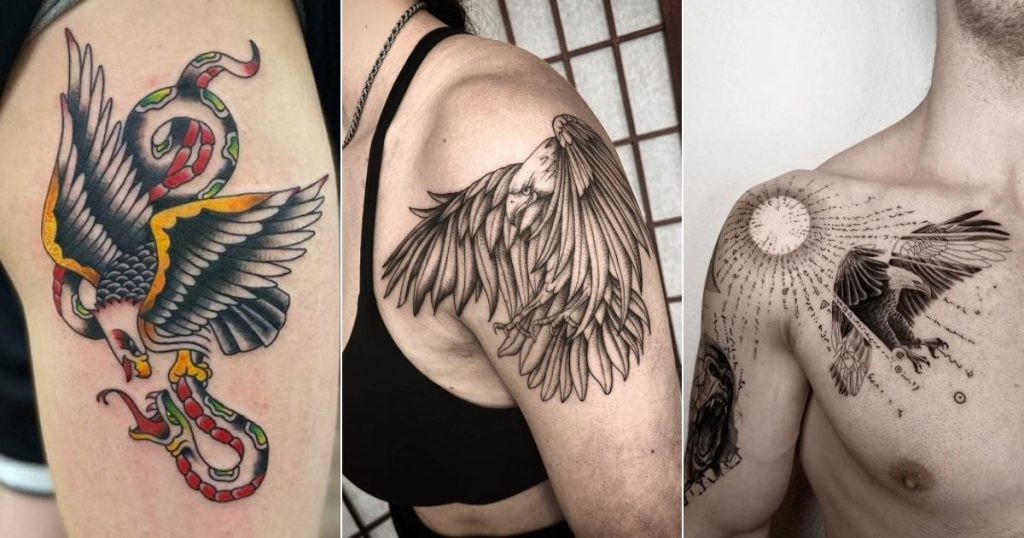Our first tattoo guide for beginners covers everything from choosing the right artist to how much it hurts (really), and everything else!
So… you’re getting your first tattoo? That’s huge. Your first ink is personal, whether it’s something small on your wrist or a full sleeve someday. But let’s be honest: it can also be confusing. What style should you pick? Will it hurt like crazy? What if you change your mind? Breathe. This first tattoo guide is here to walk you through it all, step by step. No boring textbook knowledge, just real advice that makes sense.
Before You Book: What to Think About First

1. Why Do You Want a Tattoo?
This sounds deep, but it matters. Is it something meaningful? A design you’ve always loved? Or are you just doing it because your friend got one last week? Whatever the reason, make sure you actually want it. And that you’ll still like it five years from now.
Ask yourself–Is this design tied to something you’ve lived through? Does it reflect a value or belief you hold? If your only reason is, “It looks cool,” pause and sit with that. Tattoos don’t need to be deep, but they should feel intentional, not like a passing trend.
2. What Body Part Should You Tattoo?
Start with a spot that’s easier to manage and less painful. Arms, calves, outer thighs, and shoulders are good picks. Avoid ribs, necks, and fingers unless you’re ready for a spicier ride. Also, think about visibility. Do you want your tattoo on display, or do you want to keep it low-key?
Think long-term. Some areas stretch with weight changes, like the stomach or inner biceps. Tattoos in high-friction spots (like wrists or ankles) fade faster. If you work out often or sweat a lot, give healing space priority.
3. How Big Should It Be?
Here’s the truth–small doesn’t always mean easy. Super tiny tattoos can blur over time. But going too big for your first one might be overwhelming. Somewhere in the middle is usually a good place to start–enough space for clean lines and detail, without it being a full commitment.
For a first tattoo, 2″–4″ is a comfortable range. You’ll get enough detail without being overwhelmed, and your artist won’t be rushed. Keep in mind, size affects price. Ask for a quote based on inches and style.
4. What Getting a Tattoo Actually Feels Like!
It’s hard to describe, but here’s the best way: it feels like a cat scratching a sunburn, over and over. Not the worst thing ever, but not exactly relaxing either. Some people find it kind of meditative after a while. The pain also depends on placement. Fleshier spots like your thigh? Not too bad. Bony areas like ankles or collarbones? Definitely sharper.
Pain usually spikes in the first 10–15 minutes, then your body releases endorphins that can dull it a bit. Sessions under 1 hour are easier to handle. Longer ones might require breaks or multiple sittings.
First Tattoo Guide: Choosing the Right Artist & Shop

1. Don’t Just Google “Tattoo Artist Near Me”
This is your skin. Do a little research. Look at portfolios on Instagram, check reviews, and see how clean and professional the shop looks online and in real life. Check if they show healed photos, not just fresh ink; it’s the best way to judge their true work. Watch for clean line work, smooth shading, and solid blacks. Avoid any shop that seems dirty, rushed, or unwilling to answer basic questions.
2. Meet or Message the Artist First
Good artists aren’t just good with ink but with people. Send a message, talk about your idea, and see if they feel like a good fit. Don’t be afraid to ask questions like:
- Have you done this style before?
- Do you take walk-ins or appointments only?
- Can I make changes later?
Be upfront about your budget. Good artists will help you adjust size or complexity if needed. Also, clarify if you’re picking from flash art (pre-designed work) or asking for something custom. Don’t assume edits are included unless confirmed.
3. The Shop Should Feel Safe and Chill
Clean floors, sterilized tools, and good vibes. If something feels off, leave. A legit tattoo shop will walk you through everything and make you feel comfortable from the start.
A professional shop will also display certifications, offer consent forms, and use single-use needles. A good consultation feels like a creative brainstorm, not a sales pitch. If they rush or dismiss your questions, walk away.
Booking & Prepping for Your Appointment
It won’t be much of a first tattoo guide if we didn’t prep you properly, right? Here’s the deal–walk-ins might work for small designs. But for custom tattoos or longer sessions, you’ll need to book. Some artists may have a waitlist, so plan ahead.
And don’t go in empty-handed. It’s okay if you can’t draw. Just bring photos or sketches that explain what you’re thinking. Your artist will help you shape it into something unique. Prep like you’re going to the dentist (kinda); eat a decent meal–no empty stomachs. Wear comfy clothes that make the tattoo spot easy to reach. Bring water or snacks, especially for long sessions. And leave your friends at home unless the shop says it’s okay.
Bring valid ID, as shops can’t legally tattoo minors in most regions. Skip alcohol, aspirin, and caffeine 24 hours before your session — they thin your blood, which can make bleeding worse. If it’s a visible area, moisturize daily the week before to help the ink take better.
What If You Change Your Mind?
Let’s say three months in, you’re not loving it. Or maybe you picked the wrong spot, or the design didn’t turn out how you hoped. You’ve got options:
- Touch-Ups: Many artists offer a free touch-up session after healing. Ask in advance.
- Cover-Ups: You can work a new design over the old one, but it takes skill and planning.
- Laser Removal: It’s expensive and takes multiple sessions, but it’s possible.
The best way to avoid regret is to take your time before choosing a design. Sit with it for a few weeks. If you still love it, you’re ready. It’s normal to feel regret in the first week; tattoos go through an “ugly” healing phase. Give it time to settle before deciding. Cover-ups typically need 2–3 months of healing. Laser removal costs ₹3,000–₹10,000 per session, and most tattoos need 6+ sessions.
First Tattoo Guide | Styles You Should Know

There’s a whole world of tattoo styles out there, and knowing the basics can really help you find what suits your vibe, especially if this is your first time. One popular style is fine line, known for its delicate, thin outlines and minimal shading. These tattoos often look subtle and elegant, making them a solid pick for smaller pieces like symbols, names, or minimalist art. If you’re into bold, classic designs, traditional tattoos (sometimes called old-school) use thick lines, limited colors, and strong shading. Think roses, anchors, daggers; these tattoos age well and have that iconic look that never really goes out of style.
On the more artistic side, there’s watercolor, a style that looks like someone painted your skin with soft brushes and splashes of color. These tattoos don’t always use outlines, which makes them stand out, but they can fade faster or be harder to touch up over time. Then there’s blackwork, which is all about solid black ink and heavy contrast — great for bold patterns or abstract shapes. Fans of cultural storytelling might gravitate toward Japanese tattoos, which often feature dragons, koi fish, cherry blossoms, or samurai and usually flow across the body with a lot of detail and movement. These pieces tend to be large and require multiple sessions.
Minimalist designs are a safe and stylish bet if you’re just dipping your toes into tattoo life. These small, clean tattoos usually consist of single-line drawings, dots, or tiny text. They’re easy to place almost anywhere and heal relatively quickly. Whether you’re going big and bold or small and simple, picking the right style makes your tattoo feel more personal and helps you feel confident with your choice.
Aftercare: Healing Your Tattoo the Right Way

Once your tattoo is done, the job isn’t over — how you care for it in the next few weeks makes all the difference. After getting inked, your artist usually cleans the area and covers it with a bandage or special wrap. This protects the fresh tattoo from germs and rubbing. Depending on what your artist recommends, you’ll need to leave it on for a few hours. When you take it off, gently wash the tattoo with mild, fragrance-free soap and lukewarm water. Pat it dry with a clean towel (no rubbing!) and let it breathe before applying a thin layer of a healing ointment like Aquaphor or a fragrance-free tattoo aftercare balm.
Your tattoo will go through a healing cycle in the days that follow. It might scab, flake, or itch — that’s normal! The key is not to scratch or pick at it. Keep moisturizing it with a light touch two to three times a day and avoid soaking it in water (so no baths, swimming, or hot tubs for at least two weeks). Also, keep it out of the sun (UV rays can damage fresh ink and slow down the healing). Stick with loose, breathable clothing over the area and avoid intense workouts if the tattoo is in a spot that gets a lot of friction or sweat. Within 2–4 weeks, your tattoo should be mostly healed on the surface, though deeper layers may still be settling in.
Taking proper care of your new ink isn’t just about comfort; it protects your investment. A well-healed tattoo looks better, holds color longer, and reduces the chances of infection or fading. If something doesn’t feel right, like too much swelling, oozing, or pain after the first few days, reach out to your artist or a doctor. Most of the time, though, good hygiene and a little patience are all you need for smooth healing and long-lasting results.
Too Long, Didn’t Read (But Still Want the Good Stuff?)
Don’t rush into it, skip aftercare, or pick a trendy design you’ll regret. Avoid drinking before your session and steer clear of dirt-cheap deals; quality work costs a bit more for a reason. And what should you look out for? This:
- Think about your why, size, and placement before you commit!
- Choose an artist who matches your style and has good reviews.
- Tattoo sessions can feel weird, but are totally doable!
- Follow aftercare religiously to heal cleanly.
- You’re not stuck forever — touch-ups and cover-ups exist!
Getting your first tattoo is a big deal, and it should feel exciting, not stressful. Take your time, do your homework, and go with something that really feels like you. Your skin, your story — make it count.




